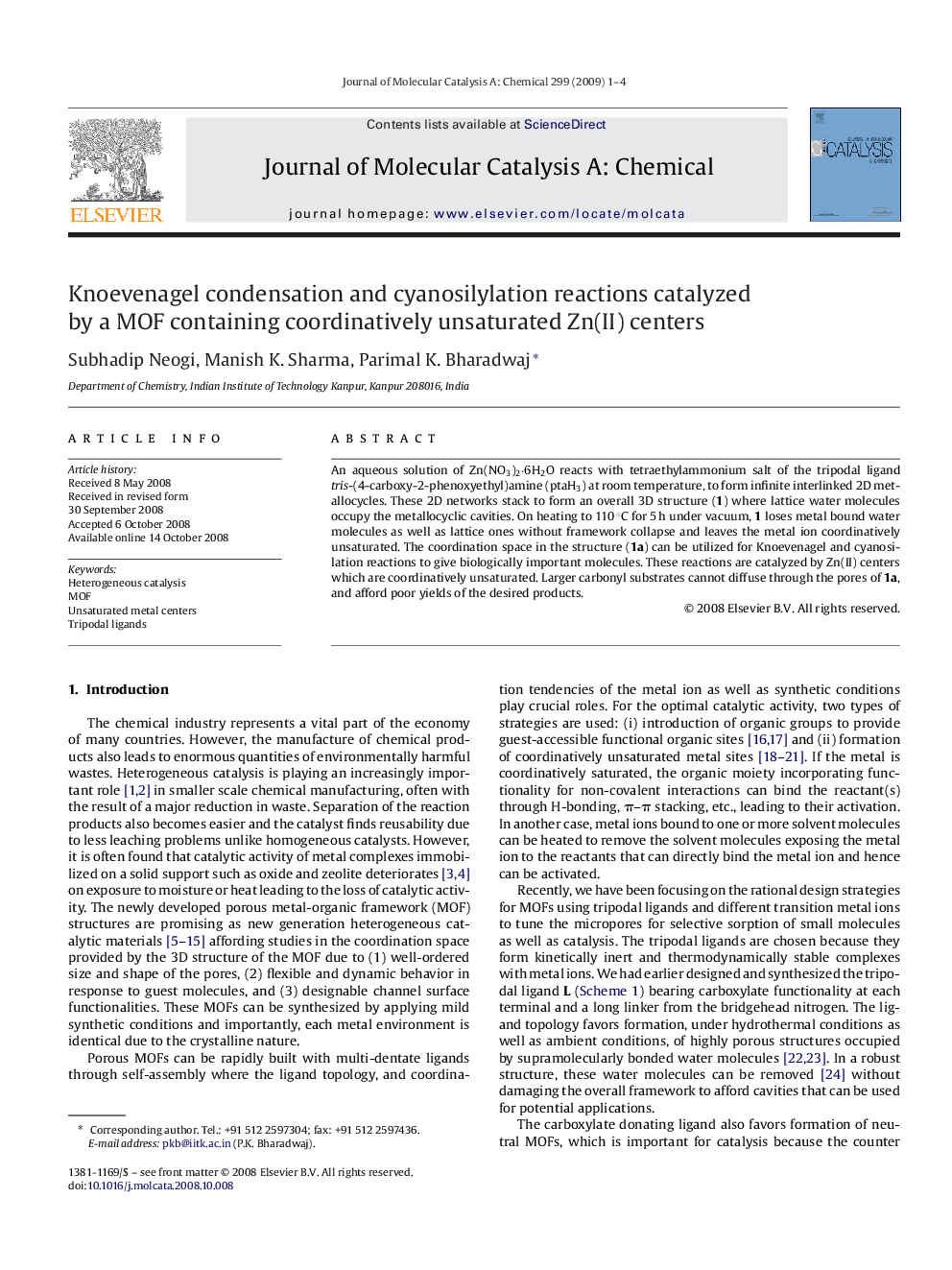| Article ID | Journal | Published Year | Pages | File Type |
|---|---|---|---|---|
| 67183 | Journal of Molecular Catalysis A: Chemical | 2009 | 4 Pages |
An aqueous solution of Zn(NO3)2·6H2O reacts with tetraethylammonium salt of the tripodal ligand tris-(4-carboxy-2-phenoxyethyl)amine (ptaH3) at room temperature, to form infinite interlinked 2D metallocycles. These 2D networks stack to form an overall 3D structure (1) where lattice water molecules occupy the metallocyclic cavities. On heating to 110 °C for 5 h under vacuum, 1 loses metal bound water molecules as well as lattice ones without framework collapse and leaves the metal ion coordinatively unsaturated. The coordination space in the structure (1a) can be utilized for Knoevenagel and cyanosilation reactions to give biologically important molecules. These reactions are catalyzed by Zn(II) centers which are coordinatively unsaturated. Larger carbonyl substrates cannot diffuse through the pores of 1a, and afford poor yields of the desired products.
Graphical abstractA MOF built with Zn(II) and a podand ligand contains a number of water molecules in the lattice including one metal bound. Upon heating, these water molecules can be removed to form a crystalline product that can be used as a heterogeneous catalyst for a number of Knoevenagel condensation and cyanosilylation reactions. Figure optionsDownload full-size imageDownload as PowerPoint slide
